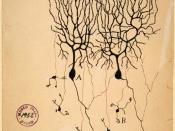Review critically the key theoretical perspectives upon the aetiology of Autism.
Autism is a psychiatric disorder characterized by impairments in three domains: social interaction, communication, and restricted and repetitive behaviors and interests. (DSM-IV, 1994, p.75) The aetiology of Autism has eluded professionals in many different disciplines with its obscure and enigmatic nature. The question of what causes Autism is highly controversial. Even though Autism and Autistic Spectrum Disorders have a biological basis currently, it is recognized as a developmental disorder and defined and diagnosed behaviorally as there is not yet a diagnostic biological instrument for ASD. A problem with behavioral diagnoses is that behavior is extremely changeable depending on ability, age of person, their surroundings and personality. In ASD, there is a spectrum of presentations, starting from the quiet and detached child with Autism and ending with the loquacious and extremely friendly adult with Asperger's Syndrome. Today, there are many studies (Joseph and Tager-Flusberg, 2004 and Amaral and Schumann, 2006) that have demonstrated Autism has a neurological basis, and genetic and other risk factors are currently being investigated.
This paper intends to review critically the different speculative viewpoints of the aetiology of Autism including neurophysiological, environmental, and genetic by first mapping out a general explanation of the brain and what areas are implicated as having some sort of abnormality and then investigating the various aetiological theories of Autism before the age of three. For the purposes of this essay the author has chosen the definition of onset of Autism to be before the age of three as to stay within this paper's theoretical scope.
The human brain is made of many parts and pieces and each piece has a different function; the collection is however, not inert. The parts of the brain are interdependent of each other and interactive as...


